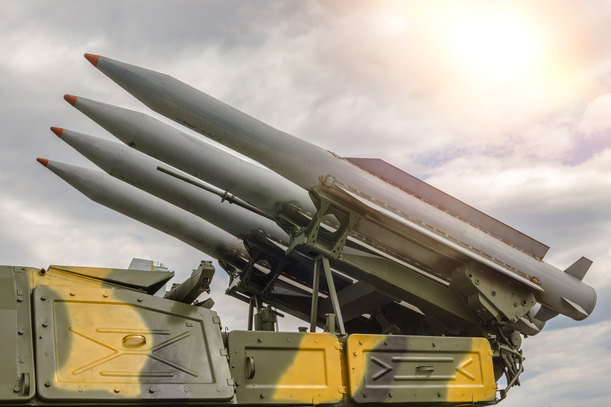
Current efforts to bring back to life the Joint Comprehensive Plan
for Action (JCPOA) in Vienna are clouded in uncertainty. The current drawn-out
negotiation process alongside Iran’s acceleration of its uranium enrichment and
curtailment of monitoring by the International Economic Energy Agency (IAEA) indicate
that a full return of U.S. and Iranian compliance to the accord is increasingly
unlikely. Even if a deal was to be reached, how long it would last is unclear. Just
as the 2015 agreement collapsed, the same can happen to any
follow-up agreement.
A significant drawback to the JCPOA is the fact that it has strict
time limitations with the most important restrictions on the Iranian nuclear
program valid for no more than ten years. With those sunset clauses in effect,
the utility of the 2015 agreement is reduced by the day. Already, Iran’s recent
nuclear advances have hallowed out the JCPOA. Increasingly, the genie is in
fact out of the bottle.
Moreover, the JCPOA has so far failed to produce any momentum on
further arms control measures or towards greater regional security. Instead,
doubts and ambiguity about the effectiveness of the agreement have heightened
rather than diffused Middle East and Gulf regional security.
The danger of continued nuclear proliferation is one of
the most severe security crises faced by the Gulf region. It is furthermore not
only a regional but also a major international concern. Given the limitations
of the JCPOA, a different approach to the issue of proliferation is therefore urgently
needed. One possibility is the concept of a Nuclear Free Zone or a more comprehensive
Gulf Weapons of Mass Destruction Free Zone (GWMDFZ).
Seven specific arguments that can be made in favor of a GWMDFZ project.
First, the JCPOA process has once again underlined that the policy
of trying to restrict a nuclear program simply does not work. The nature of any
nuclear program is based on secrecy and deception. Attempting to control a
program therefore quickly becomes a cat-and-mouse game in which one can
never be sure to discover new details or hidden information. Given that
reality, any process designed to prevent a country from obtaining a military
WMD capability must have as its imperative a permanent
rather than a temporary end-state.
Second,
in six different areas of the world, a nuclear-free zone is already working. This
includes Africa, Latin America, Central Asia, Southeast Asia, the South Pacific,
and Antarctica. While the JCPOA is current only valid for 10 years, the Free
Zone treaties signed so far have proven to be successful, effective, and most
importantly, lasting. The most recent Non-Proliferation Treaty (NPT) Review
conference held in 2020 acknowledged that nuclear-free zones enhance global and
regional peace and security. Thus, a GWMDFZ would represent a significant
complement to the network of denuclearized zones already in place. In addition,
with the 9 states of the Gulf region (the six GCC countries, Iran, Iraq, and
Yemen) all being signatories to the major agreements of the NPT, the Chemical
Weapons Convention (CWC) and the Biological and Toxin Weapons Convention
(BTWC), a theoretical GWMDFZ already exists.
Third,
by agreeing to the principle of a GWMDFZ and engaging in serious negotiation to
bring such a zone about, Iran will confirm its peaceful intention regarding its
nuclear program. As a member of the NPT, Iran has already signed on with a
defacto Free Zone. The NPT affirms
the right of countries to establish specified zones free of nuclear weapons
while allowing countries to use nuclear energy for peaceful purposes. A
GWMDFZ thus would not prevent any state from developing a civilian nuclear
capability.
Moreover,
with its engagement with the international community on the current nuclear
program, Iran has shown a willingness to discuss the nuclear issue. There is
therefore no reason to think that Iran would not also be open to further explore
and discuss the GWMDFZ idea. A GWMDFZ would also lead additional credibility to
the pronouncement from Tehran that good neighborly relations are a priority of
its government.
Fourth, a GWMDFZ would prevent further nuclear proliferation in the
region. There can be no doubt that even if Iran is not currently actively
pursuing a military nuclear program, the other states in the region will hedge
with that possibility in mind. There is thus a distinct danger that other
countries in the region will follow the Iranian path if no other alternative is
provided. A GWMDZ is that alternative.
Fifth, a GWMDFZ is based on the concept of sub-regional to regional
and thus represents a precursor to a wider Middle East Free Zone, something
first proposed by Iran in the 1970s. Despite being on the agenda, the
implementation of a Middle East Free Zone has so far not happened and is
unlikely to move forward given Israel’s nuclear capability. Again, as an alternative, the first step of a
GWMDFZ would be to complement the existing African Free Zone to increase the
pressure on Israel to also consider the idea.
Such an argument has a precedent as the African Zone eventually led
South Africa to give up its nuclear program. The GWMDFZ concept would therefore
provide the groundwork for such an arrangement to encompass the entire Middle
East including Israel.
Sixth, there is already existing support for such a zone in the Gulf
region. Saudi Arabia has on numerous occasions called for the establishment of
a free zone with Saudi Prince Sultan Bin Abdulaziz, then Defense Minister, and
Crown Prince, in his address to the U.N. General Assembly in 2005, calling for the
Middle East and Gulf regions to be free of WMD. The GCC in their annual summit
communique in 2006 equally voiced its strong support for the Middle East and
Gulf WMD Free Zone.
When the Gulf Research Center first presented the idea in 2004, it
gained immediate attention and support with representatives of all nine regional
states attending the initial meetings on the subject. The debate and utility of
the concept therefore already has a track record to build on.
Seventh, a GWMDFZ could be the cornerstone for a more comprehensive
regional security regime and would be a major step to help regional governments
successfully move towards future shared security. It, therefore, represents a concrete
example of a confidence-building step that will make a direct contribution to
diffusing current tensions. It can further be seen as a contribution to a
broader project of a regional security system in which arms control and
no-proliferation are an integral part.
It is therefore time to put the concept of the GWMDF Zone back on
the table. What should first be a discussion at the track two level could
quickly be elevated to track one consideration as regional states rally behind
the idea. Moreover, while one should be realistic that the idea will be subject
to debate and not every country might immediately agree to promote the concept,
a GWMDFZ can be put forward based on “open agreement” allowing for the timely
accession of other members.
A GWMDFZ is therefore a preferable diplomatic and political solution
and answer to the question of probable nuclear proliferation and further
escalation.
*Mustafa Alani directs the Security and Defense Research program at
the Gulf Research Center (GRC). Christian Koch is the GRC’s Director of
Research.

